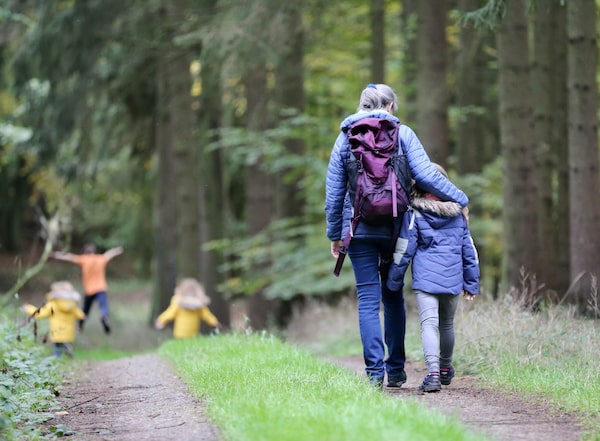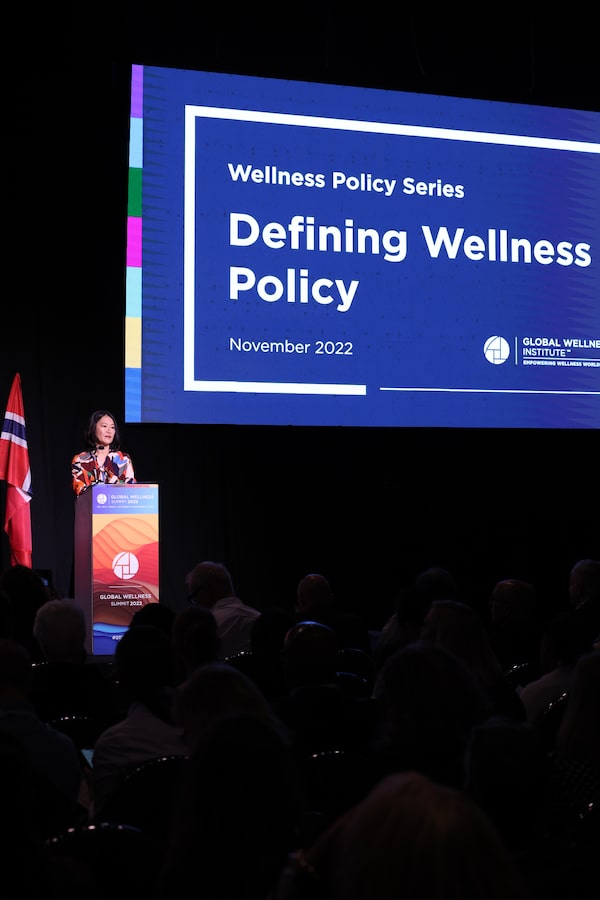Trending

Instead of buying that next gadget or piece of gear, go for a walk with someone.Supplied
Crowd sourcing
Are we suffering from self-care fatigue? Judging from recent stories in The Atlantic and the Los Angeles Times, it would seem so. “The more overwhelmed and exhausted we get, the more we seemingly owe it to ourselves to pursue ‘wellness,’” writes The Atlantic’s Sophie Gilbert. Yet, the things that can help us achieve wellness, say a nap or a walk, get overlooked because they aren’t marketable in the ways that a weighted blanket or smart watch are. “Self-care through consumption and particular marketed activities can exacerbate stress. If we don’t reach our inner Zen, we blame ourselves,” writes Rina Raphael in the LA Times. One issue is that self-care has increasingly become a solo endeavour whereas social connection is integral to achieving wellness. Instead of buying that next gadget or piece of gear, ask a friend to go for a walk. “Real self-care is not a DIY activity,” Raphael writes.
Retreat

Fairmont Banff Springs.AccorHotels/Courtesy of AccorHotels
Just breathe
Start the new year with a breath of really fresh air. As part of parent company Accor’s Beyond Limits experience collection, the Fairmont Banff Springs will be turning the mountainside Cliffhouse Bistro (elevation: 7,000 feet) into an oxygen bar for two weeks in January. Dubbed Haute O2, the bar will play host to just eight guests a day. Along with high-altitude breathwork, there will be a culinary element. “Drawing inspiration from the terroir, featured ingredients will be sourced from local farmers, ranchers and fisheries. Indigenous elements such as Haskap berries, known as the ‘Berry of Long Life,’ and foraged mushrooms will also be woven into the culinary experience, fostering a deeper connection to this incredible landscape,” says Brian Calder, the hotel’s director of sales and marketing.
Haute O2, $499 through allbeyondlimits.com.
Obsession

Gabriela Schonbach and Amanda June Giannakos launched Movement by NM.Supplied
Canadian mother-daughter duo Gabriela Schonbach and Amanda June Giannakos launched Movement by NM, a subscription-based fitness app, with the intention of being a space for everyone to feel comfortable with movement. The inclusive offering of classes includes strength training, dance and cardio classes, which range from five to 30 minutes, as well as adaptive classes for those with limited mobility, led by an athlete in a wheelchair, and sessions for those new to movement. With a membership, users also receive a Personal Movement Plan. Paired with a Movement by NM teacher, the plan includes classes specific to individual fitness abilities, goals and schedules. “We are very intentional with the specific exercises and disciplines we give you – daily movement ideas based on your lifestyle, and even relatable articles, films and playlists to keep you inspired to move,” says Giannakos, the company’s creative and managing director.
Movement by NM monthly membership, $15, annual membership, $99 through movementbynm.com.
Investment buy
Briiv, which just launched in Canada, is a Sonos-like take on an air purifier.Supplied
Green and clean
Briiv, which just launched in Canada, is a Sonos-like take on an air purifier. The sleek unit has a glass top filled with greenery, giving it the look of a futuristic potted plant. But using natural fibres to filter the air, including moss, coconut husk and wood carbon, one Briiv has the same cleansing effect on a room as just more than 3,000 house plants. Because these materials are suitable for composting at home or through municipal waste programs, there’s no HEPA filters to be replaced and disposed of. The unit cleans the air of pollen, mould spores, pet dander and harmful gases like VOCs, and can be paired with a smart home device, like Google or Alexa, for hands-free use.
Briiv air filter, $549.99 through ecomvmnt.ca.
Business

The annual Global Wellness Summit.Shauli Lendner, Studio-art/Supplied
Policy statement
At the annual Global Wellness Summit earlier this month, host organization Global Wellness Institute launched a report titled Defining Wellness Policy, a call to action for governments and public organizations to take up the quest for wellness. “Widespread adoption of preventive approaches and healthy lifestyles is essential if we are to address our mounting global health crises and spiralling economic costs. And yet, not everyone has the resources, motivation, knowledge or enabling environment to do so,” write the report’s authors Ophelia Yeung and Katherine Johnston. The global wellness economy is worth US$4.4-trillion, and is increasingly being developed for the wealthiest of consumers. The authors argue that wellness policy can contribute to, among other things, environmental protection, the promotion of locally sourced and developed products and the mitigation of rising health care costs. “In many cases, macro-level policies (such as reducing poverty, stopping armed conflicts, or addressing climate change) will have a greater impact on our health and well-being than policies targeting individual behaviours and community environments,” Yeung and Johnston write.